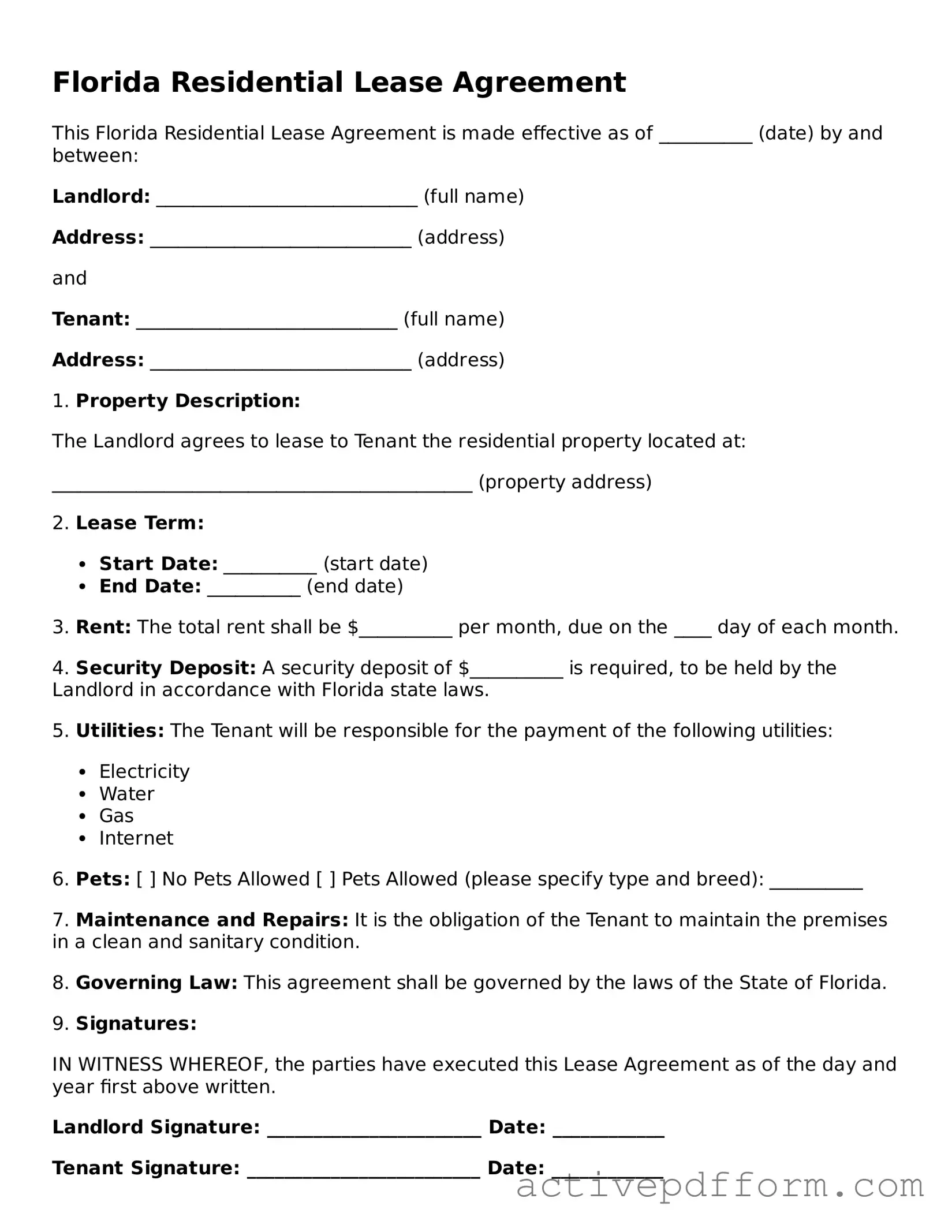What is a Florida Residential Lease Agreement?
A Florida Residential Lease Agreement is a legally binding document between a landlord and a tenant. It outlines the terms and conditions of renting a residential property in Florida. This agreement typically includes details such as the rental amount, lease duration, and responsibilities of both parties.
What should be included in a Florida Residential Lease Agreement?
Key elements of a Florida Residential Lease Agreement include the names of the landlord and tenant, property address, rental amount, payment due dates, security deposit details, maintenance responsibilities, and rules regarding pets or smoking. Additionally, the lease should specify the duration of the lease and conditions for renewal or termination.
Is a Florida Residential Lease Agreement required by law?
While not legally required, having a written lease agreement is highly recommended. It provides clarity and protection for both landlords and tenants. A verbal agreement may lead to misunderstandings and disputes, making a written lease a crucial tool for both parties.
How long is a typical lease term in Florida?
In Florida, lease terms can vary widely. Common durations include one year, six months, or month-to-month arrangements. The specific term should be clearly stated in the lease agreement to avoid confusion and ensure both parties understand their commitments.
Can a landlord increase rent during a lease term?
Generally, landlords cannot increase rent during a fixed lease term unless the lease agreement specifically allows for such increases. For month-to-month leases, landlords must provide written notice of any rent increase, typically 30 days in advance, as required by Florida law.
What happens if a tenant wants to break the lease early?
If a tenant wishes to break the lease early, they may face penalties as outlined in the lease agreement. Common consequences include losing the security deposit or being responsible for rent until a new tenant is found. It’s advisable for tenants to communicate with their landlord to explore options for early termination.
What rights do tenants have under Florida law?
Florida law grants tenants several rights, including the right to a habitable living environment, privacy, and protection against retaliation for exercising their legal rights. Tenants also have the right to receive their security deposit back within a specific timeframe after moving out, provided they have met the lease terms.
Can a landlord enter the rental property without permission?
In Florida, landlords must provide reasonable notice, typically 24 hours, before entering the rental property. Exceptions exist for emergencies, such as fire or flooding. Respecting tenant privacy is crucial, and landlords should only enter for legitimate reasons outlined in the lease agreement.
What should a tenant do if they have a dispute with their landlord?
If a dispute arises, tenants should first attempt to resolve the issue directly with the landlord. If that fails, they may consider mediation or contacting local housing authorities for assistance. Legal action is also an option, but it is advisable to seek legal counsel to understand the best course of action.
